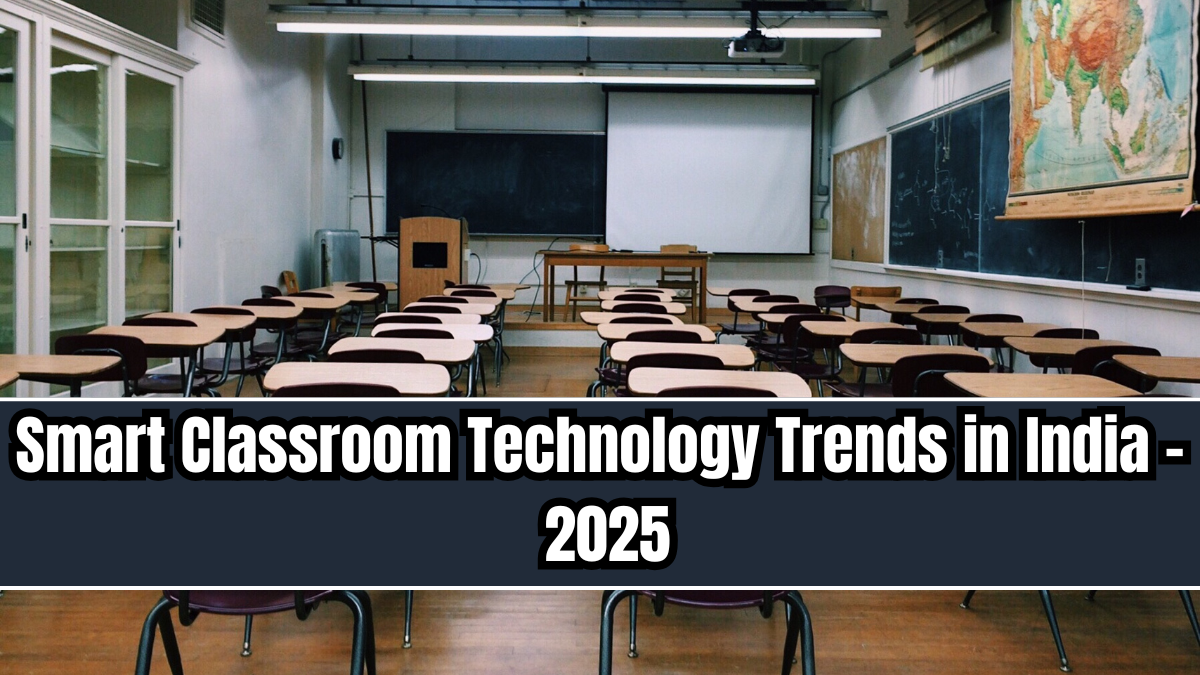The education landscape in India is evolving rapidly, and Smart Classroom Technology 2025 is leading the transformation. With the government’s focus on digital learning and schools adopting innovative solutions, classrooms are no longer limited to blackboards and chalk. Instead, they are becoming interactive, technology-driven spaces that engage students, encourage collaboration, and prepare them for a digital future.

Why Smart Classrooms Are Essential in 2025
The push towards smart classrooms stems from the need to provide modern, accessible, and engaging education for all. Key reasons include:
-
Personalized learning: Technology allows teachers to adapt lessons to suit diverse learning styles.
-
Interactive engagement: Visuals, videos, and simulations enhance student understanding.
-
Bridging digital divides: Rural and urban schools can access the same quality of resources.
-
Future readiness: Students gain exposure to technology-driven environments early on.
Top Smart Classroom Innovations in India – 2025
Schools across India are integrating cutting-edge tools that redefine learning. Some of the most impactful digital learning technologies include:
-
Smart Boards & Interactive Displays: Replacing traditional boards with touch-enabled screens for multimedia lessons.
-
Augmented Reality (AR) & Virtual Reality (VR): Bringing abstract concepts in science, history, and geography to life.
-
AI-Powered Learning Tools: Personalized assessments, automated grading, and tailored study material recommendations.
-
Digital Libraries & E-Resources: Access to global books, journals, and interactive content anytime, anywhere.
-
Gamified Learning Apps: Making subjects like math, science, and languages fun and competitive.
-
Hybrid Learning Platforms: Blending physical and online classes for maximum flexibility.
-
Cloud-Based Attendance & Performance Tracking: Simplifying administrative tasks while keeping parents informed.
Benefits for Teachers and Students
The adoption of smart classroom technology in India 2025 brings several benefits:
-
For Students: Engaging content improves understanding and retention. Instant feedback strengthens learning outcomes.
-
For Teachers: Technology reduces administrative load, enabling teachers to focus more on personalized instruction.
-
For Parents: Digital updates on student performance and attendance ensure transparency.
Government and Private Sector Initiatives
In 2025, government programs such as the Samagra Shiksha Abhiyan and NEP 2020 reforms are fueling the expansion of digital classrooms. Meanwhile, private ed-tech companies are collaborating with schools to introduce advanced learning solutions at affordable rates. Partnerships with global tech firms are also making high-end tools accessible to Indian students.
Challenges and Future Outlook
While progress is significant, challenges like affordability, internet connectivity in rural areas, and training teachers to effectively use technology remain. However, with growing investments and policies, smart classrooms are expected to become the norm rather than the exception in the next few years.
Final Thoughts
The Smart Classroom Technology Trends in India – 2025 showcase how schools are reimagining learning experiences. With innovations in AR, AI, and gamified platforms, classrooms are becoming spaces that not only teach but also inspire. This shift ensures Indian students are well-prepared for global opportunities in the digital age.
FAQs
What is smart classroom technology?
Smart classroom technology refers to the use of digital tools like smart boards, AR/VR, and AI-based platforms to enhance teaching and learning.
Which schools in India are adopting smart classrooms?
Both private and government schools across metro cities and rural areas are increasingly integrating smart classroom setups.
How does smart classroom technology benefit students?
It makes learning interactive, improves understanding, and prepares students for technology-driven careers.
Is smart classroom technology expensive?
While initial setup costs may be high, government subsidies and affordable ed-tech solutions are making it accessible.
What role does the government play in smart classrooms?
Government programs like Samagra Shiksha Abhiyan and NEP 2020 are pushing digital infrastructure and funding schools for smart classroom projects.
Click here to know more.
